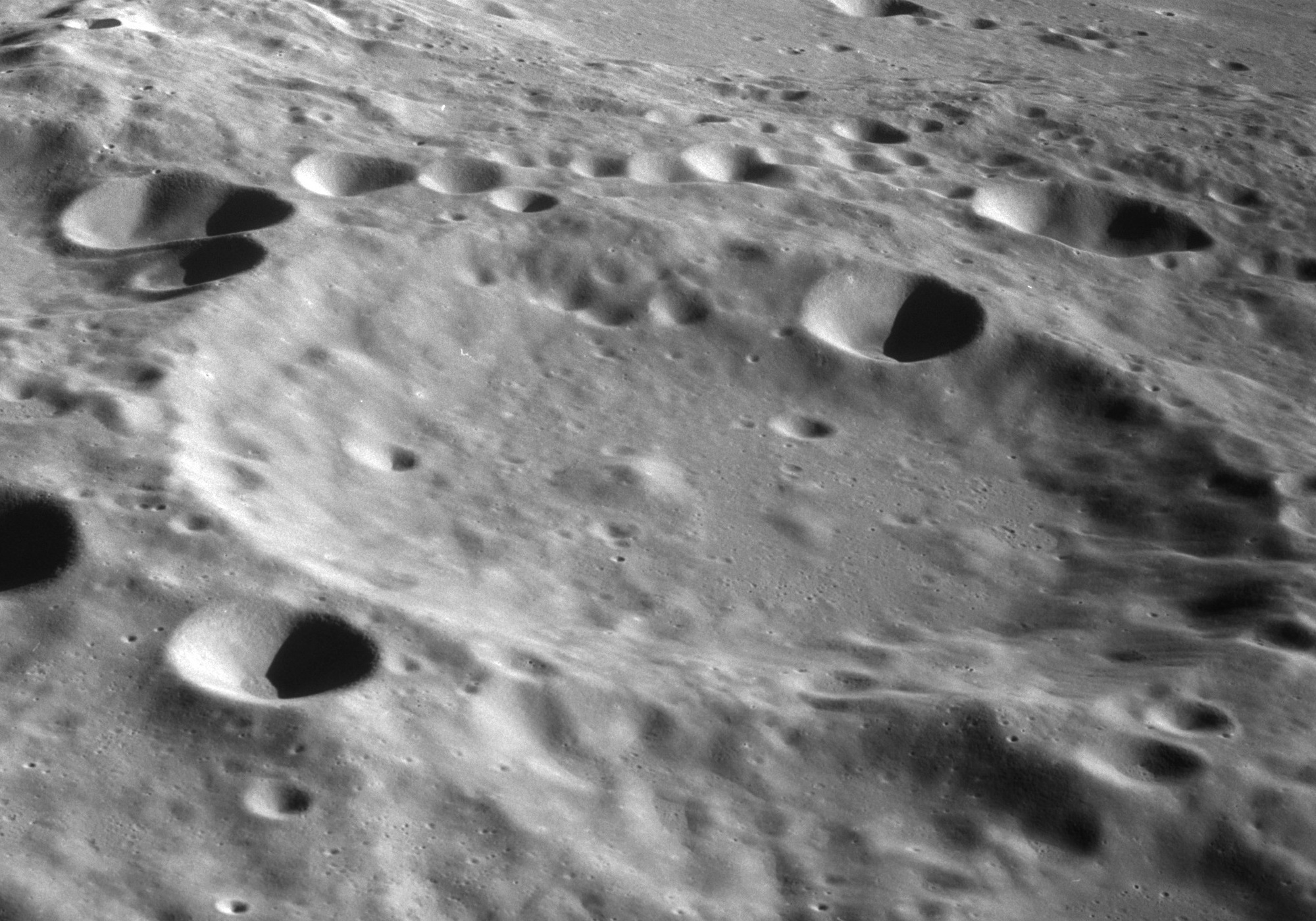Stratton (crater) on:
[Wikipedia]
[Google]
[Amazon]
 Stratton is a lunar
Stratton is a lunar Lunar Farside Chart (LFC-1A)
/ref>
 Stratton is a lunar
Stratton is a lunar impact crater
An impact crater is a circular depression in the surface of a solid astronomical object formed by the hypervelocity impact of a smaller object. In contrast to volcanic craters, which result from explosion or internal collapse, impact crater ...
on the Moon
The Moon is Earth's only natural satellite. It is the fifth largest satellite in the Solar System and the largest and most massive relative to its parent planet, with a diameter about one-quarter that of Earth (comparable to the width ...
's far side. It is located to the north of the large craters Keeler and Heaviside, and less than one crater diameter to the south of Dewar.
As with many craters on the Moon, this feature has become worn and eroded due to a multitude of subsequent impacts of various sizes. The most prominent of these is a small, cup-shaped impact along the southwestern outer rim. The remainder of the rim has been worn down, forming an uneven shoulder about the interior depression. The interior floor has a small ridge near the midpoint, but is otherwise unremarkable.
The crater was named after British astronomer and astrophysicist Frederick J. M. Stratton by the IAU
The International Astronomical Union (IAU; french: link=yes, Union astronomique internationale, UAI) is a nongovernmental organisation with the objective of advancing astronomy in all aspects, including promoting astronomical research, outreach ...
in 1970. Stratton was known as ''Crater 304'' prior to naming./ref>
Satellite craters
By convention these features are identified on lunar maps by placing the letter on the side of the crater midpoint that is closest to Stratton.References
* * * * * * * * * * * * {{refend Impact craters on the Moon